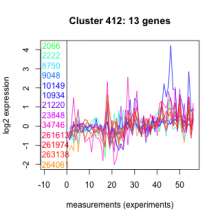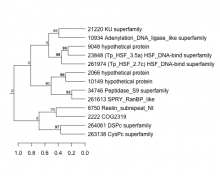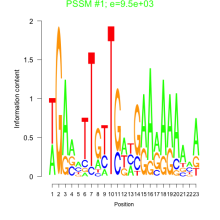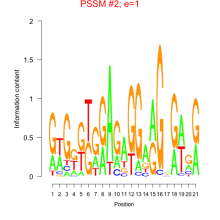2066 hypothetical proteinThalassiosira pseudonana
| Chromosome | Product | Transcript Start | End | Strand | Short Name | |
|---|---|---|---|---|---|---|
| 2066 | chr_2 | hypothetical protein | 76250 | 82591 | - | hypothetical protein |
| NCBI ID | Ensembl Genomes exon ID |
|---|---|
| 7445080 | Thaps2066.18, Thaps2066.17, Thaps2066.5, Thaps2066.3, Thaps2066.1, Thaps2066.7, Thaps2066.8, Thaps2066.2, Thaps2066.12, Thaps2066.11, Thaps2066.16, Thaps2066.10, Thaps2066.13, Thaps2066.4, Thaps2066.19, Thaps2066.15, Thaps2066.14, Thaps2066.6, Thaps2066.9 |
| Expression Profile | Conditional Changes | Cluster Dendrogram | Discovered Potential cis-Regulatory Motifs |
|---|---|---|---|
Thaps_hclust_0412 |
 |
 |
   |
| Normalized Mean Residue | Discovered Potential cis-Regulatory Motifs | |
|---|---|---|
|
Thaps_bicluster_0020 |
0.47 |
 9500  1 |
Not available
| KEGG description | KEGG Pathway |
|---|---|
| Not available | Not available |

Add comment